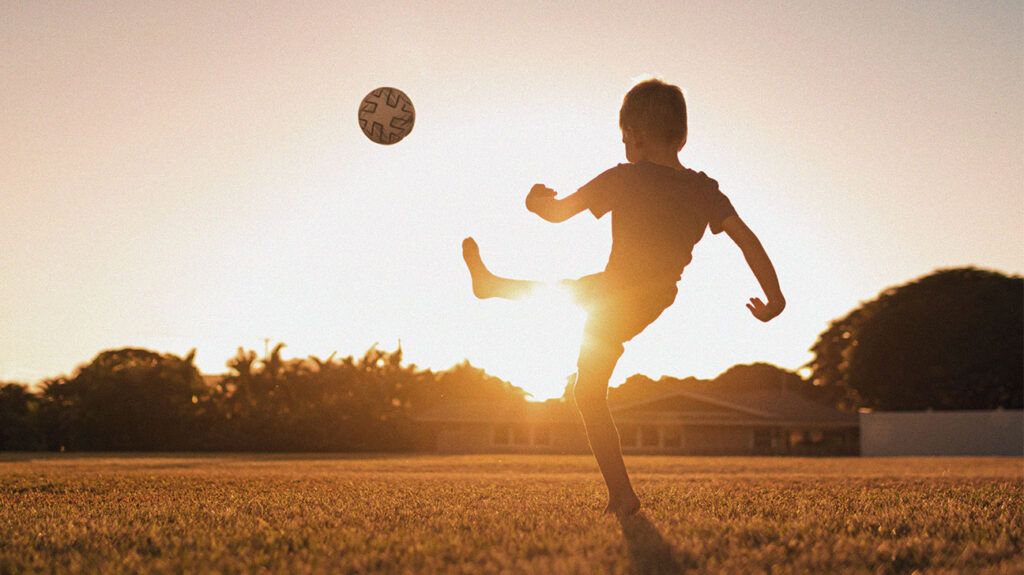Juvenile osteochondritis dissecans (JOCD) is a joint condition that typically affects children and young people. A person may experience pain, stiffness, or a locking sensation in the joint.
JOCD happens when the layer of bone just below the layer of cartilage inside a joint has developed microfractures. Over time, small pieces of bone and cartilage may also break off into the joint.
This condition can occur in young people because their skeletons are not fully mature and the growth plates at the ends of their bones have not yet closed. JOCD can affect any joint, and it may be more likely to affect children and young people who lead an active lifestyle.
Read on to learn more about JOCD. This article looks at symptoms, causes, treatments, and more.

The symptoms of JOCD can vary from person to person, depending on the location and severity of the condition.
One of the first symptoms of JOCD is pain in the affected joint. A person may also experience:
- swelling
- stiffness
- decrease in the range of motion
As the condition develops, a person may experience: clicking, catching, and locking sensations in the joint.
Learn more about osteochondritis dissecans.
Currently, experts do not know the exact cause of JOCD. However,
JOCD typically occurs in young people who are very active.
After a doctor has completed a physical examination of the affected joint, a person will usually require an X-ray.
The doctor might also order an MRI scan to see the affected joint in more detail. They may want to inject a fluid with magnetic properties into the joint, which allows them to see the affected joint more clearly during the MRI scan.
Depending on the severity of the condition, several treatment options are available for a person with JOCD.
Rest and rehabilitation
The first line of treatment is typically to rest and refrain from physical activities for approximately
After approximately 6 weeks, a doctor may recommend some rehabilitation and strengthening exercises, while still suggesting the person avoid physical activity.
A doctor will then monitor the healing process, and an individual will usually be able to gradually return to physical activity as JOCD symptoms improve.
Learn more about nonsurgical treatments for osteochondritis dissecans.
Surgery
If JOCD is not getting better after at least
Surgical procedures for JOCD can include:
- Drilling: This is a surgical procedure that has high rates of healing and low rates of complications.
- Internal fixation: A surgeon can internally repair the damage to a joint using metal or biodegradable fixings. Studies suggest this type of surgery may heal JOCD of the knee in up to
97% of people approximately 3 years after surgery. However, there are small risks of fixings coming loose or taking a long time to degrade, depending on their type. - Salvage techniques: In rare cases of JOCD, a person may need a salvage procedure, such as bone marrow stimulation or transplantation of healthy cartilage to the affected joint.
A person’s doctor can help them create a suitable treatment plan.
Osteochondritis dissecans is more common in children than in adults.
A person with JOCD will need to wait for the affected joint to fully heal before returning to physical activity or sports. The amount of time may differ for each person. It can depend on factors such as:
- the size of the lesion
- the location of the lesion
- the type of surgery
- the healing potential of the individual
Approximately
If a child requires surgery for JOCD, a doctor will typically review healing every few months with an X-ray. This can help determine how much longer a child needs to wait before returning to physical activity or sports.
If a child does not receive full treatment for JOCD, symptoms such as pain, swelling, and stiffness may keep coming back. Over time, pieces of bone or cartilage may break off inside the affected joint.
A child with JOCD
Receiving an accurate diagnosis and beginning treatment as early as possible can help reduce the chance of complications.
Juvenile osteochondritis dissecans (JOCD) is a joint disorder that typically affects children and young people between ages 10 and 16 years, particularly if they are physically active.
JOCD can occur when the bone underneath the layer of cartilage in a joint becomes loose or breaks down. This can affect any joint. It can lead to pain, inflammation, stiffness, clicking, locking, and eventually early osteoarthritis.
The first line of treatment is typically nonsurgical. A doctor may recommend complete rest from any physical activity for a period of months. A person may also need to wear a brace or splint or use a crutch to help keep weight off the joint.
If nonsurgical treatment is not successful, a person may have to consider surgery. A person’s doctor can advise them on which treatments they recommend and what the recovery might look like.
